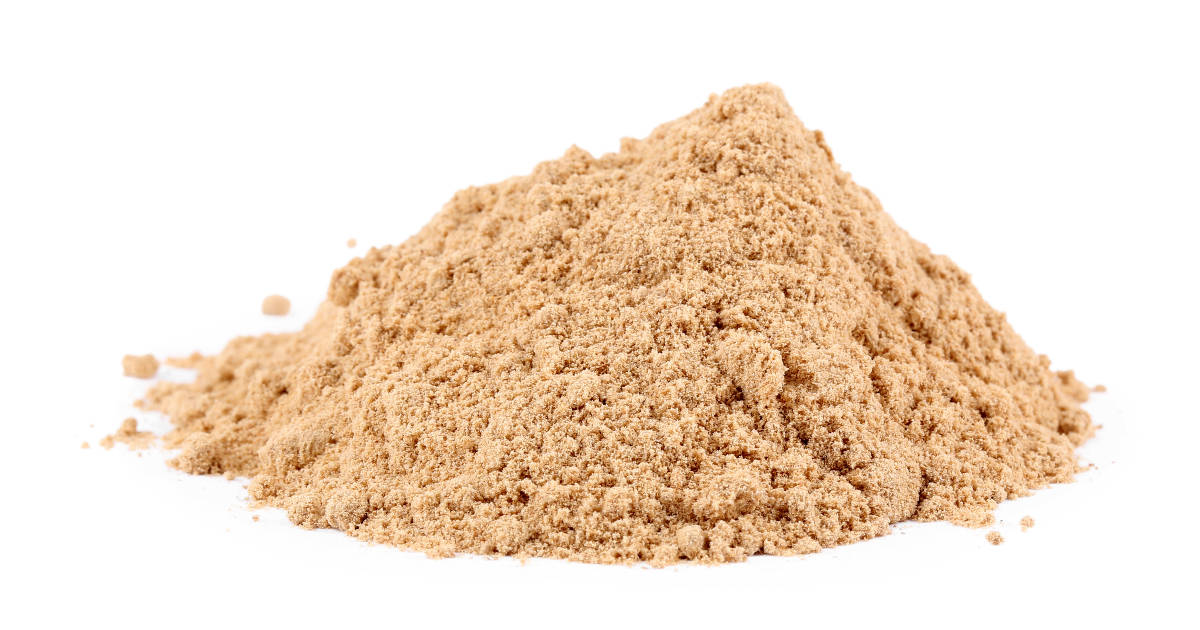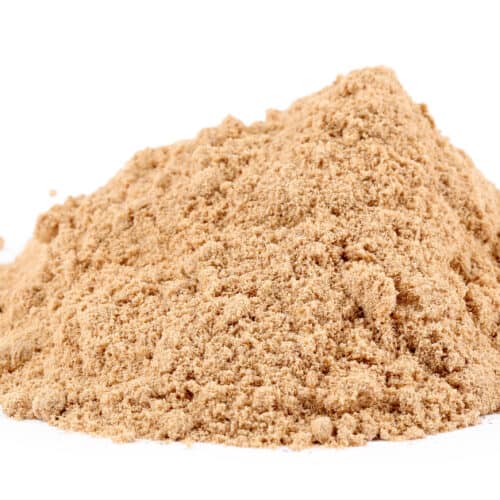Ginger is a warming and flavorful spice used in many dishes. It has a sweet, spicy flavor that enhances both savory and sweet recipes. Ginger is also revered for its many health benefits - from settling upset stomachs to fighting inflammation.

While you can purchase ground ginger powder, making your own at home is easy and allows you to control the freshness and quality. Homemade ginger powder has an incredible aroma and bite that store-bought powders simply cannot compete with.
Choosing and Preparing Fresh Ginger Root
The first step is selecting high-quality, fresh ginger root to dehydrate:
- Choose ginger that feels heavy for its size with smooth, taut skin. Wrinkled, softened or bruised ginger will not dehydrate well.
- Snap off a small piece - if it breaks cleanly without stringy fibers, the ginger is very fresh. Older ginger with fibers is harder to grind finely.
- Rinse the ginger under cool water while scrubbing with a vegetable brush to remove any dirt or debris. Pat dry thoroughly.
- Peel the ginger by scraping off the thin skin using a spoon or paring knife if it is very fibrous or woody. The most tender, flavorful layer is just beneath skin.
- Cut the root into paper-thin slices, discs or matchsticks using a sharp knife or mandoline slicer. The thinner the cuts, the faster and more evenly ginger will dehydrate.
Key Takeaway: Select very fresh, firm ginger and prepare by peeling if needed and slicing thinly before dehydrating for optimal results.
Dehydrating Ginger - Oven & Dehydrator Methods
You can dry fresh ginger in a dehydrator or low oven - here are both methods:
Using a Dehydrator
Dehydrators allow fast, consistent drying without risk of burning at low, controlled temperatures:
- Arrange ginger slices in a single layer on dehydrator trays without overlapping.
- Dehydrate 4-8 hours at 95°F to 135°F until completely dried and brittle.
- Flipping halfway helps expose all sides to warm airflow. But isn’t necessary if ginger is thinly sliced.
- Checking ginger and rotating trays periodically ensures even drying.
- Grating ginger before dehydrating makes for very quick drying with more surface area exposed - however more flavorful oils are lost.
Benefits of using a dehydrator include optimal preservation of nutrients and efficiency at maintaining target temperatures. Well-sliced ginger can be fully dehydrated in as little as 4 hours.
Using the Oven
You can also dry ginger using a standard oven:
- Line baking sheets with parchment paper then arrange ginger slices in a single layer, no overlapping.
- Bake at the lowest possible temperature, ideally between 95°F to 140°F. Most ovens only go down to 170°F.
- Crack the oven door to allow moisture to escape and decrease oven temperature.
- Check ginger and rotate pans every 10-15 minutes to prevent uneven drying or burning.
- Expect longer drying times of 1-3 hours. Ovens have hotter temperatures and lack circulating airflow of a dehydrator.
Tips for best results: Use thin slices, low temps, rotate pans, prop door open, and check frequently.
Testing Ginger Dryness
It’s important to fully dehydrate ginger before grinding to maximize shelf life and prevent clumping:
- Ginger is done when slices are completely hard and brittle, snapping instead of bending when you break a piece.
- Let ginger cool fully after dehydrating before testing texture. Warm slices seem more flexible than they truly are.
- If there’s any bend or flexibility left, dehydrate longer. Remaining moisture causes spoilage and clumping when ground.
- Over-drying is better than under-drying. Ginger that crumbles easily is sufficiently dehydrated for grinding.
Key Takeaway: Fully dehydrate ginger slices until hard and brittle when cool - this prevents spoiling and lets ginger powder correctly.
Grinding Dehydrated Ginger Into Powder
A mortar and pestle works for small batches, but electric coffee/spice grinders efficiently grind dehydrated ginger into fine powder:
- Break ginger slices into smaller pieces to fit into grinder opening.
- Work in small batches - add ginger pieces and pulse 3-4 times before grinding 15-30 seconds.
- Shake or stir powder between pulses to prevent clumping.
- Sift powder through a fine mesh strainer to catch any fibers or pieces and grind again if needed.
- Avoid over-grinding as excess heat alters flavor. Pulse, don’t continually grind for long periods.
- Let ginger powder cool fully before storing to prevent moisture condensation.
Recommendations: Use short 1-2 second pulses, stir/shake between batches, sift for fine powder, and don’t overheat.
Storing Homemade Ginger Powder
Proper storage preserves freshness and prevents moisture absorption:
- Allow finished ginger powder to cool fully before transferring to airtight storage containers.
- Glass jars with tight-fitting lids work best for keeping air and moisture out.
- Store powder away from light and heat, like in a cool, dark pantry or refrigerator.
- Freezing extends shelf life to 1 year.
- When grinding, only prepare what you’ll use in a month or two.
- Check aroma before use - if you can’t readily smell/identify ginger, it’s lost potency.
Key Takeaway: Allow homemade ginger powder to completely cool before storing in air-tight, moisture-proof containers for up to one year.
Making Ginger Tea
You can also use ginger pieces from any point in the process - fresh, dried or powdered - to make healing ginger tea:
- Fresh - Bring water to a boil, remove from heat and add thinly sliced fresh ginger. Steep 5+ minutes, strain and enjoy. Adds light gingery flavor.
- Dried - Use dehydrated ginger slices instead of fresh. Steep longer, 10-15 minutes for more intense flavor. Strain before drinking.
- Powdered - Add 1⁄4 to 1⁄2 teaspoon ginger powder per cup of hot water and stir to combine. Will create some sediment.
Customize strength by adjusting amount of ginger used and steeping time. Add lemon, honey or other herbs as desired.

Homemade Ginger Powder Recipe
Ingredients
- Fresh ginger root, firm with smooth skin
Instructions
- Choose fresh, heavy ginger. Snap off a piece - it should break cleanly without fibers.
- Rinse ginger, scrubbing off any dirt or debris. Pat very dry.
- Peel ginger if skin is woody or fibrous. Slice paper-thin using a sharp knife or mandoline.
- Arrange slices in a single layer on dehydrator trays or parchment lined baking sheets.
- Dehydrate at 95-140°F, rotating trays periodically, until brittle when cooled.
- Break ginger slices into smaller pieces to fit into a grinder.
- Grind ginger in short 1-2 second pulses to prevent overheating. Stir powder between pulses.
- Sift powder through a fine mesh strainer to remove any fibers.
- Allow ginger powder to completely cool before storing in airtight containers.
FAQs
How long does homemade ginger powder last?
Up to one year stored in airtight containers in the freezer. Around 2-6 months in the pantry.
How much ginger do I need per teaspoon of ground ginger powder?
About 1 ounce of fresh, whole ginger root makes 1 heaping teaspoon ginger powder.
Is ginger powder the same as ground ginger?
Yes, ginger powder and ground ginger are the same product and can be used interchangeably.
Can I skip peeling the ginger skin before dehydrating?
Yes, if the skin is very thin and not fibrous. But peel mature, woody skin to prevent texture issues.
Do I need to blanch ginger before dehydrating?
No, you do not need to blanch ginger prior to dehydrating. You can use raw ginger slices as-is with good results.
Conclusion
Making DIY ginger powder at home is simple, affordable and lets you control for freshness and quality. Plus it yields incredibly aromatic, flavorful ground ginger that enlivens Asian dishes, baked goods, teas and more.
For optimal results, select very fresh ginger root and prepare by peeling if needed and slicing paper-thin. Fully dehydrate the ginger before grinding to maximize shelf life. Store the ground powder in airtight containers away from moisture, heat and light.

